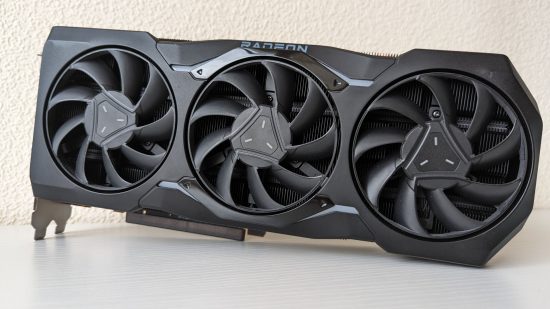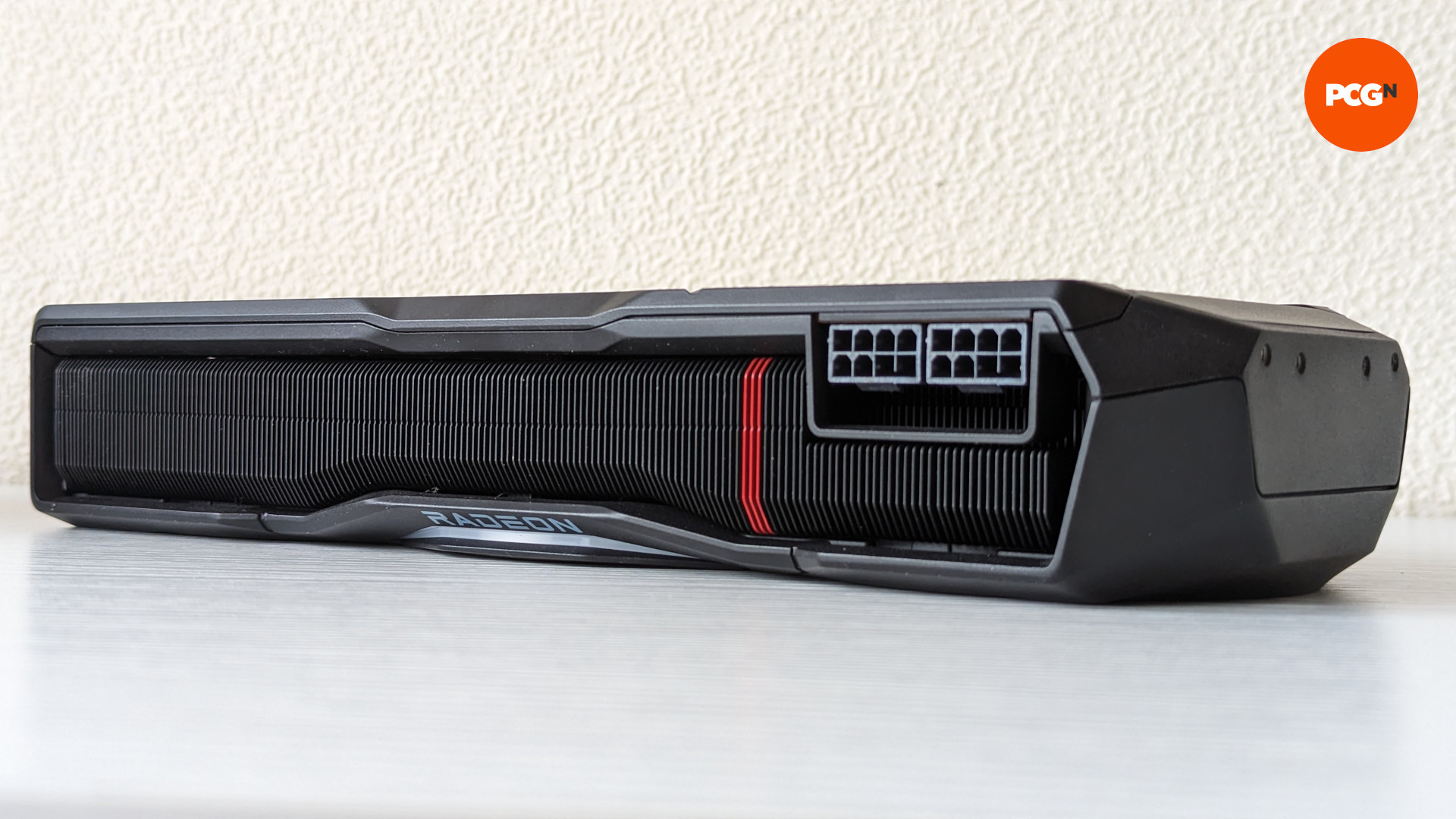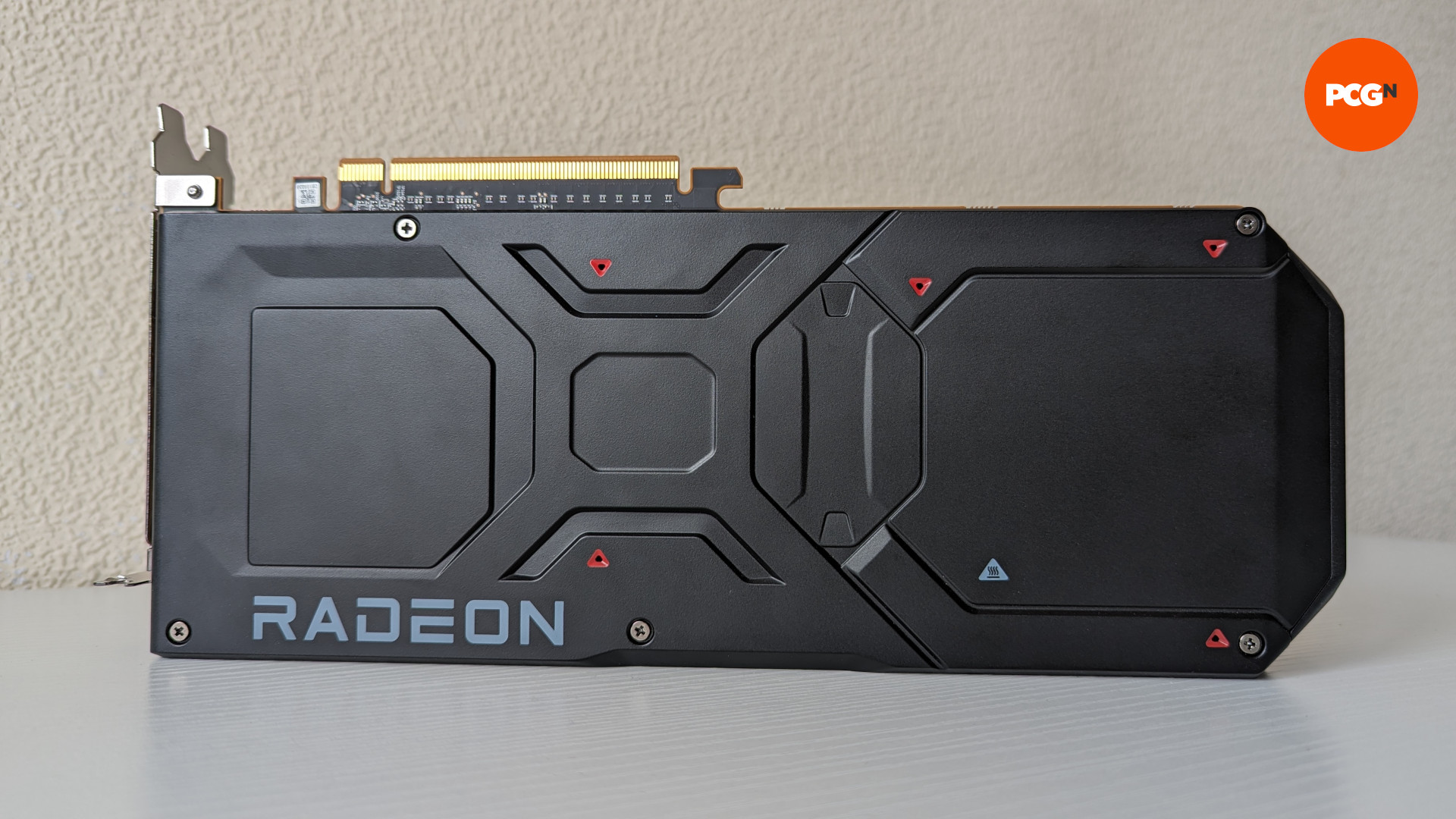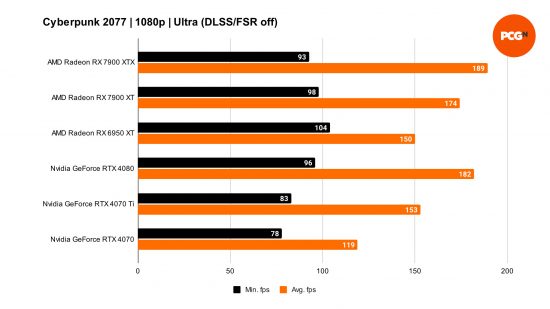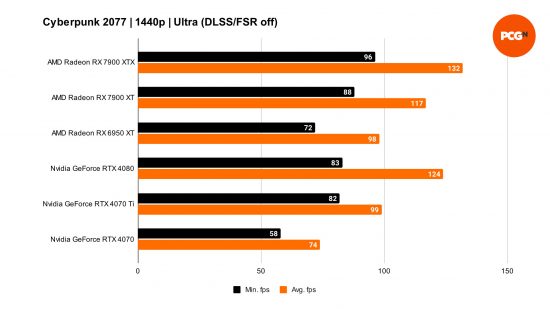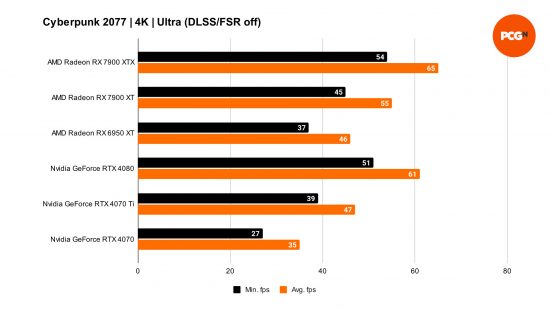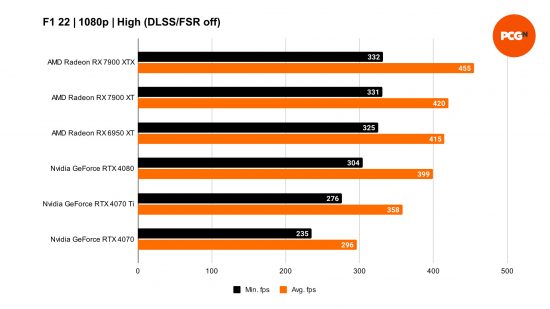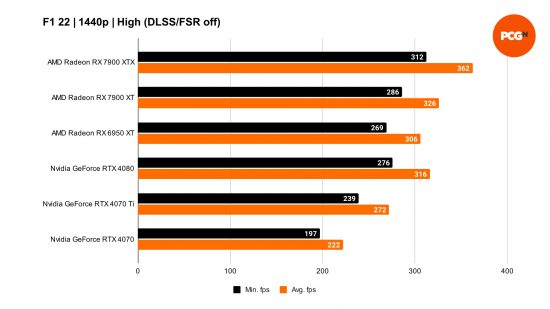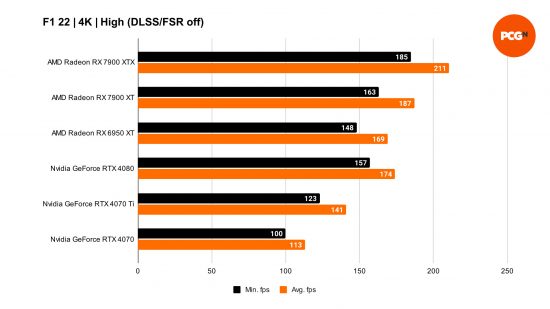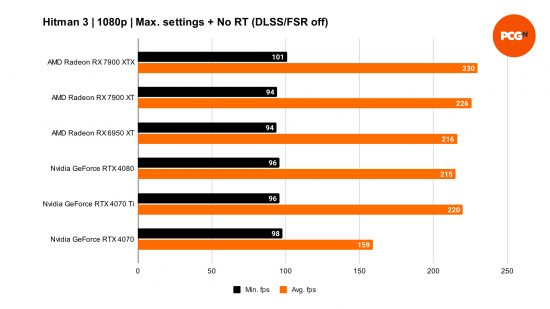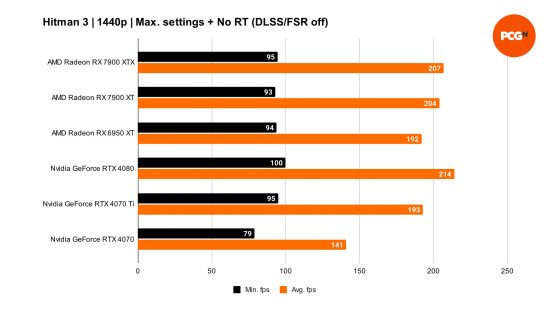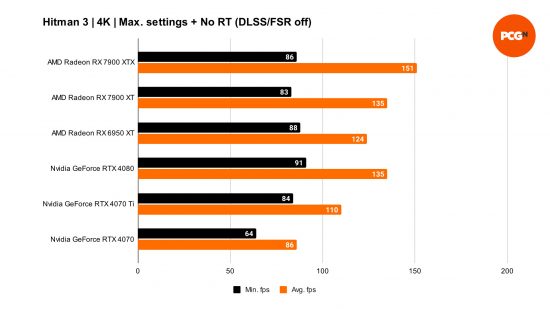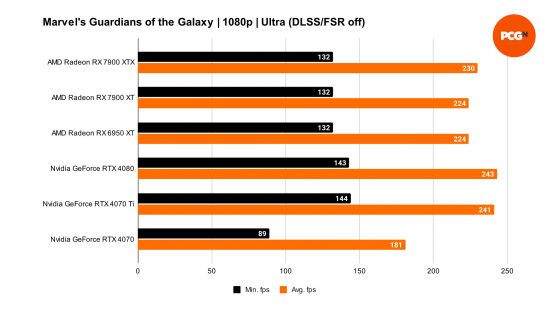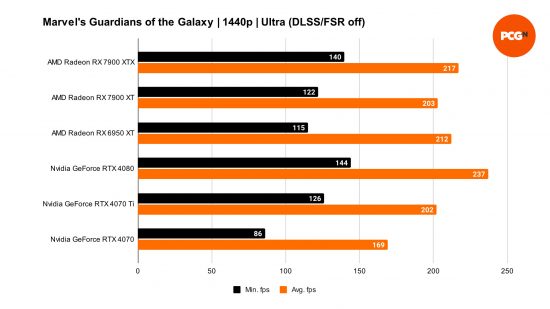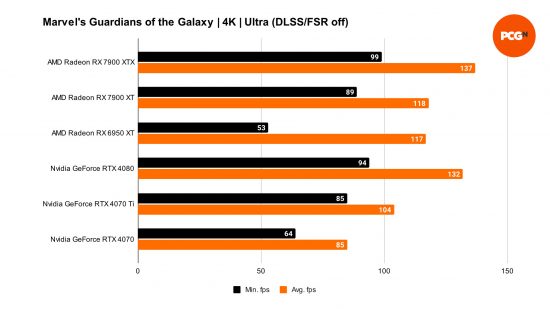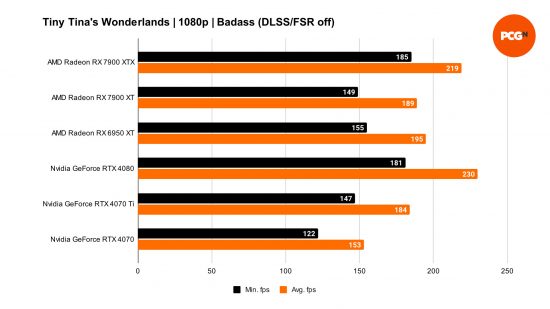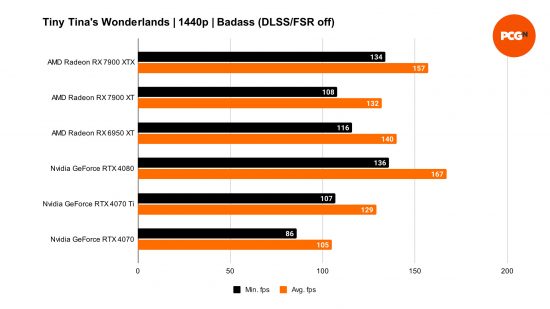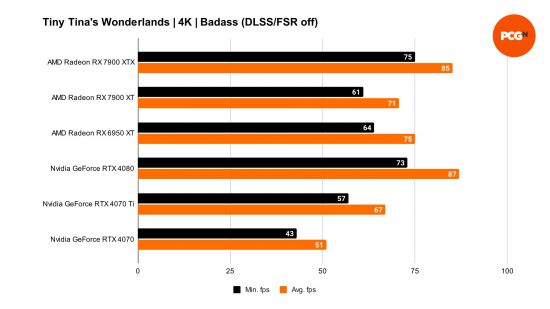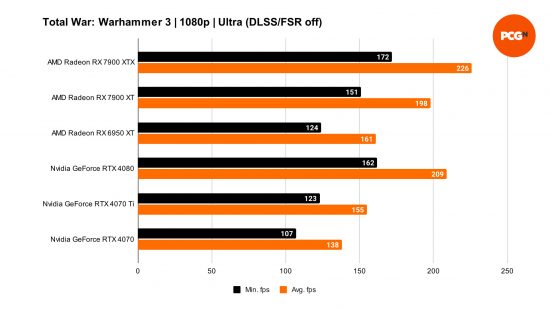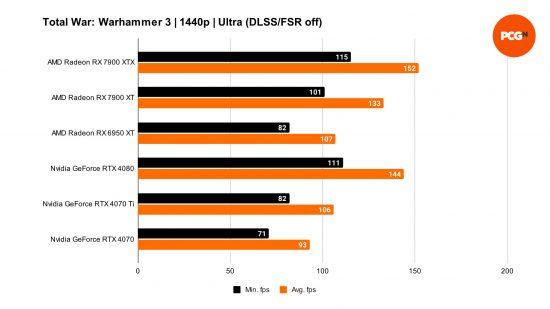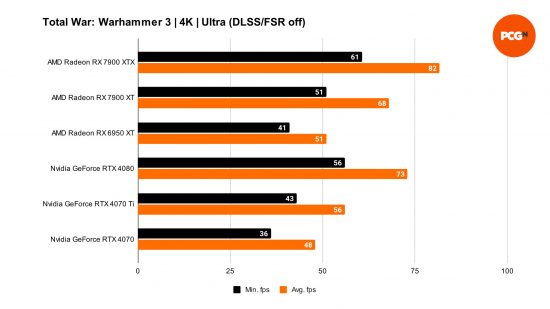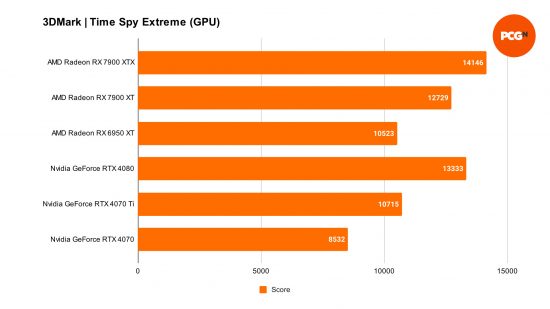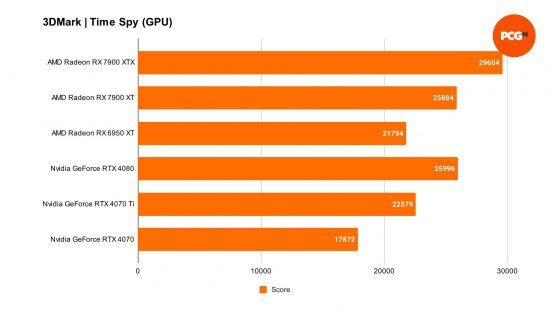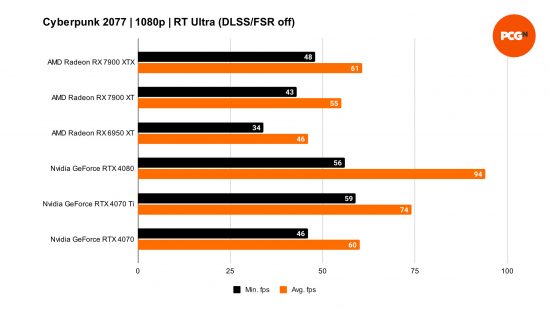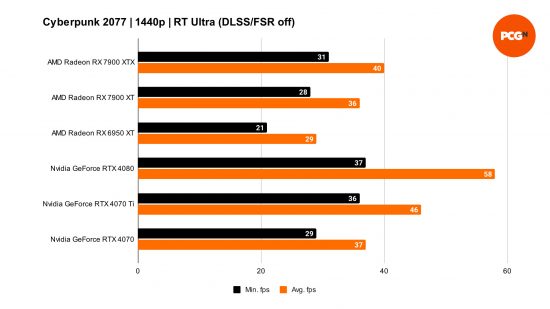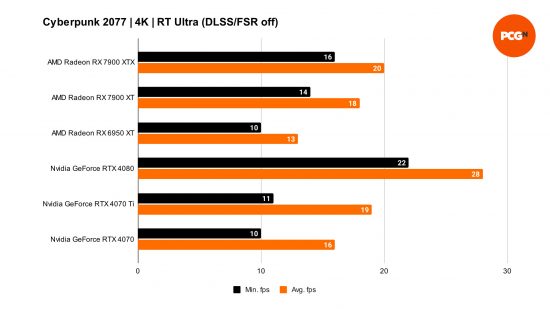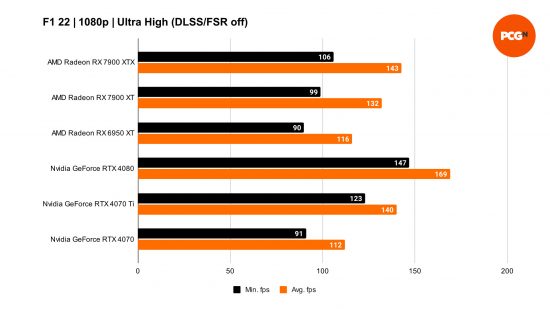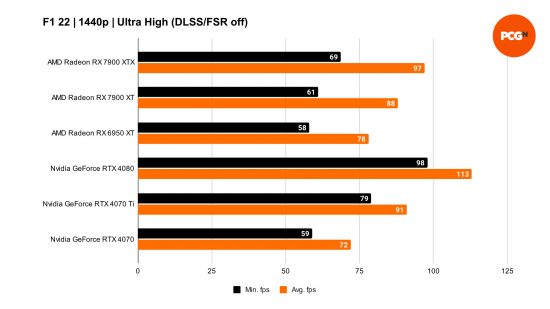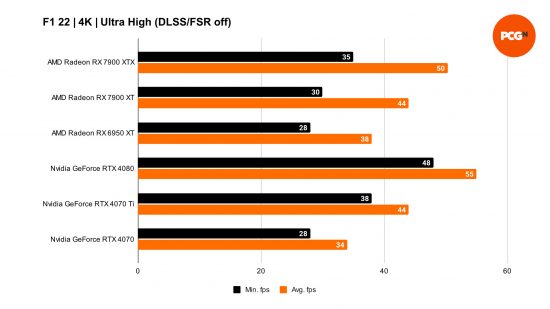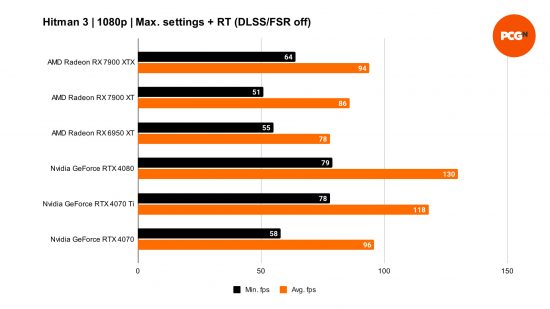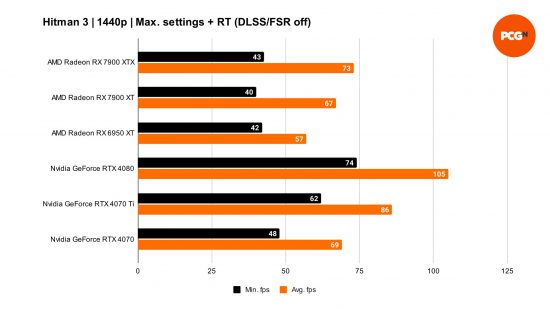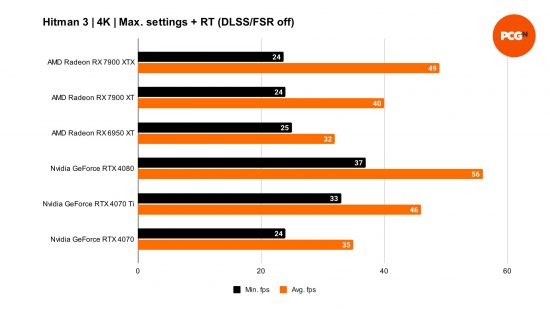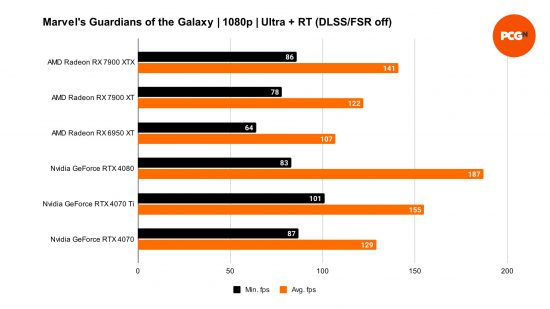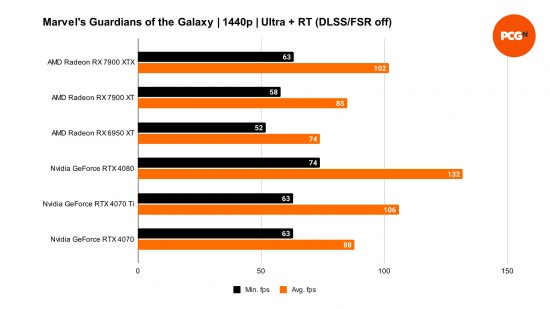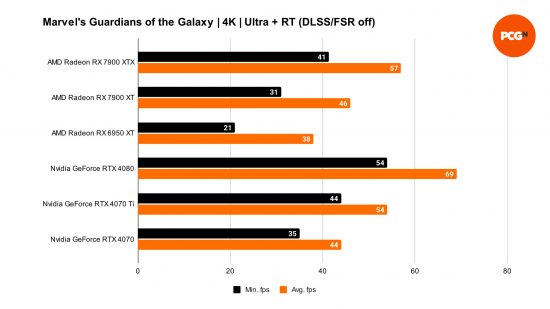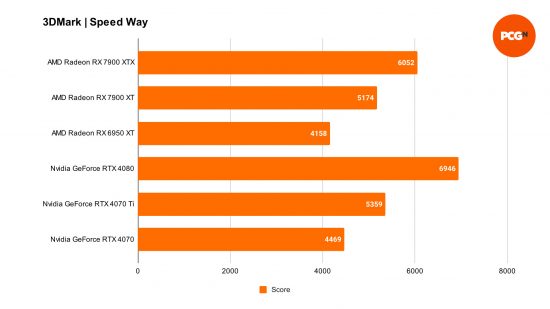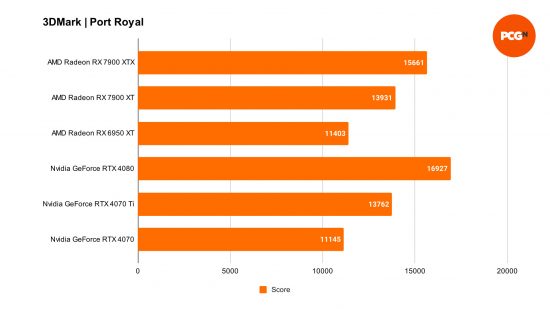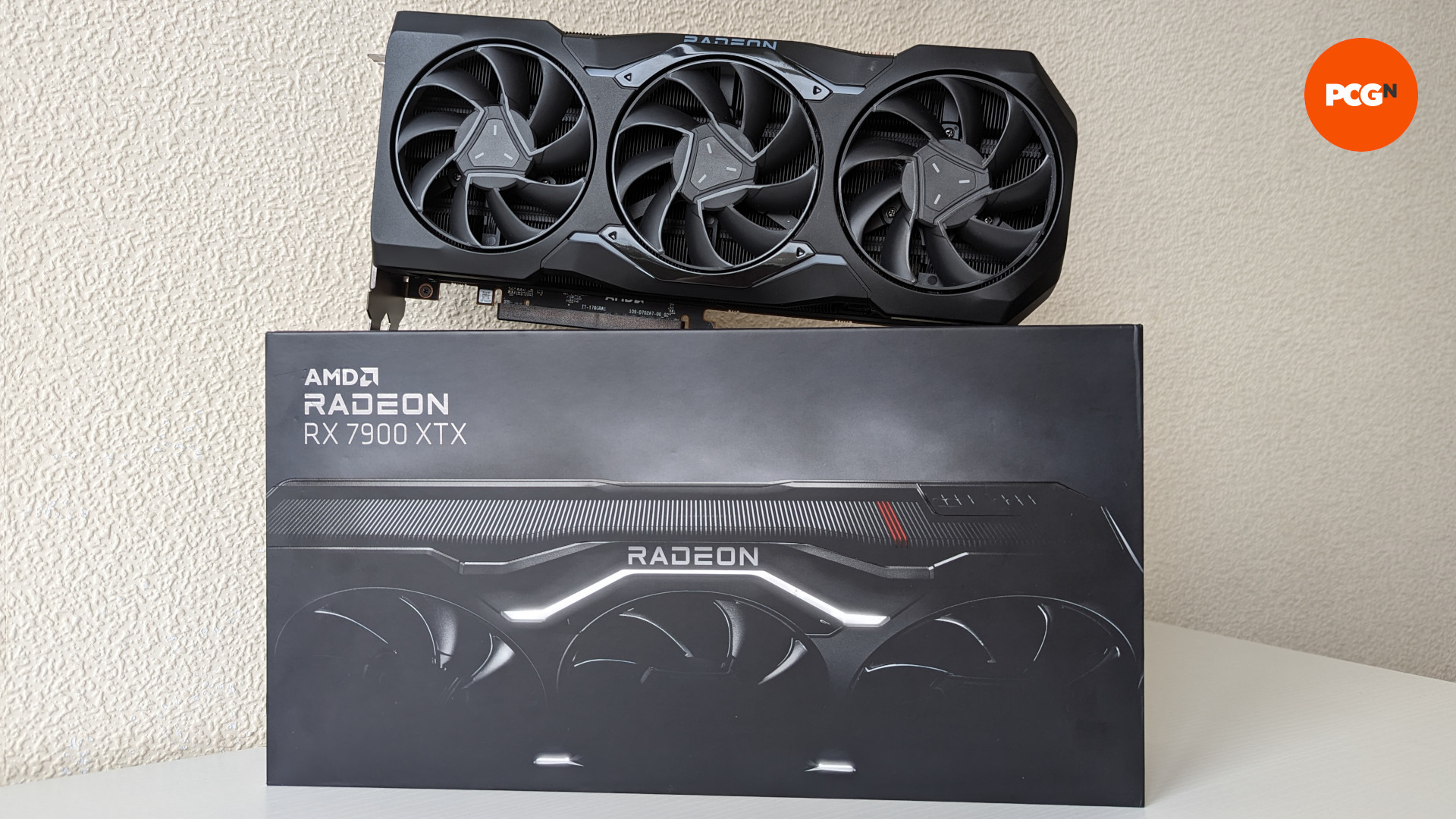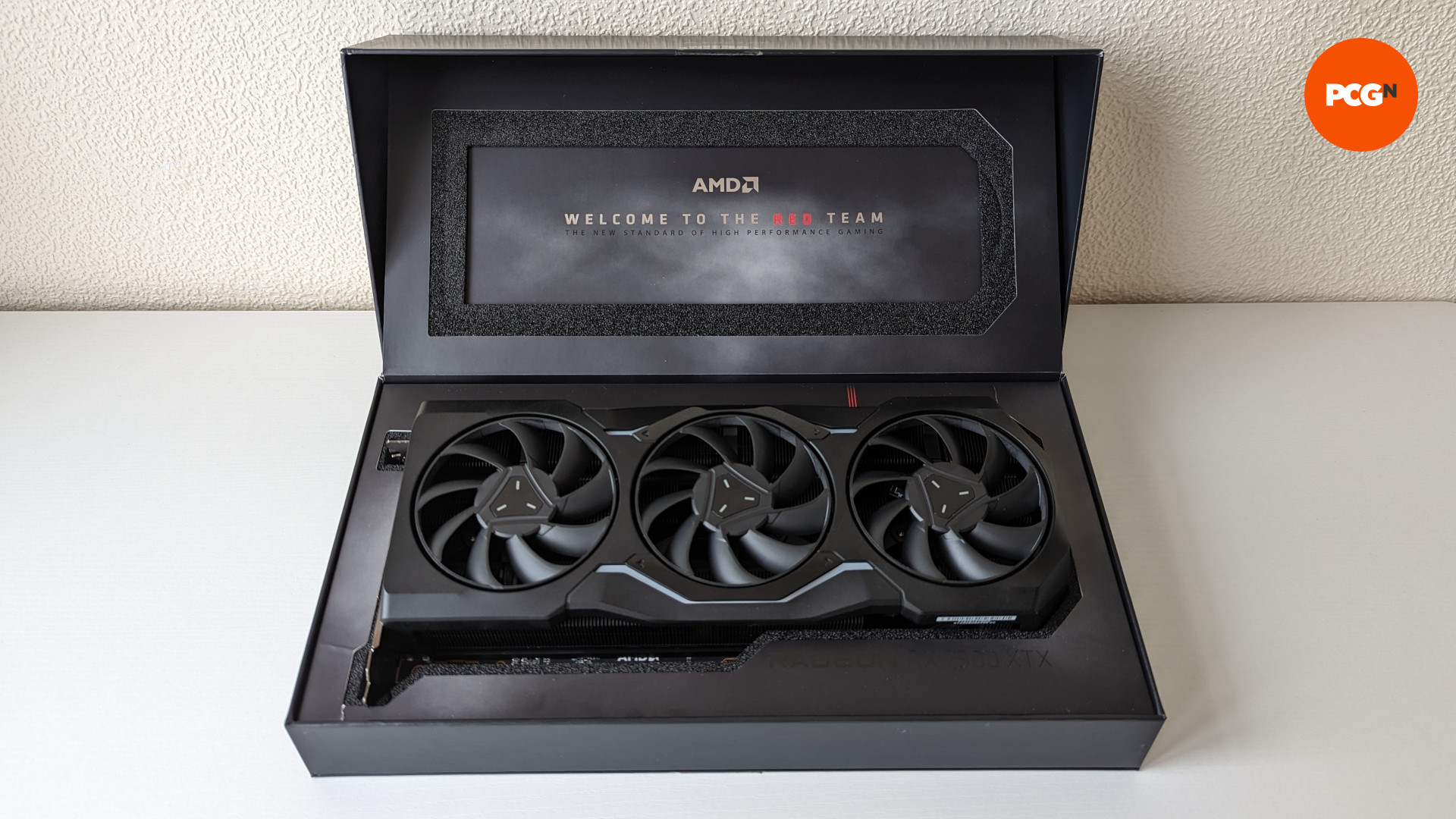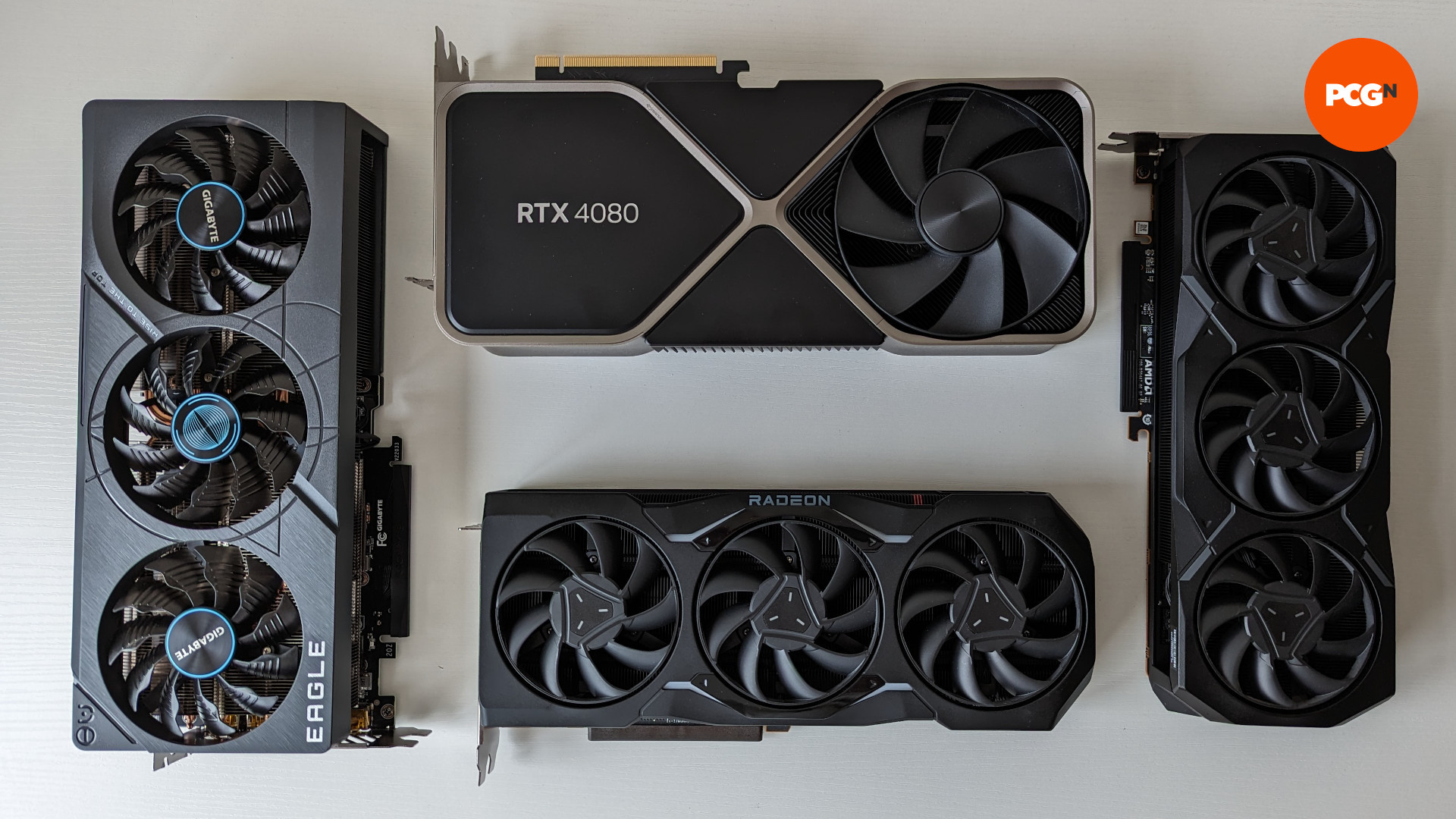Our Verdict
The AMD Radeon RX 7900 XTX is an exceptionally powerful graphics card that holds its own against more expensive options in rasterized scenarios. However, the lack of an answer for DLSS Frame Generation hampers its ability to properly compete, especially where ray tracing is concerned.
I’ve been waiting to write up this AMD Radeon RX 7900 XTX review for a while, having been excited to get to grips with the RDNA 3 flagship since its reveal. Now, having spent a while with AMD’s latest flagship graphics card, I’m happy to say almost all my expectations for it have been met.
I’ve been using the AMD Radeon RX 7900 XTX for several months now, swapping out the previous long-term occupant of our test bench, the Nvidia GeForce RTX 4080. It’s proven to be a wonderful graphics card in many respects, with its positive traits largely outshining its few blemishes.
AMD Radeon RX 7900 XTX specs
The AMD Radeon RX 7900 XTX specs are the best the RDNA 3 microarchitecture has to offer, packing the largest amount of stream processors, compute units and second-generation ray accelerators you’ll find in the RX 7000 series. Adding to its bag of tricks, the graphics card also has a humungous 24GB of GDDR6 VRAM and a 384-bit memory bus, for a total memory bandwidth that falls just shy of 1TB/s.
Here are the AMD Radeon RX 7900 XTX specs:
| GPU | Navi 31 |
| Stream processors | 6,144 |
| Compute units (CUs) | 96 |
| Ray accelerators | 96 (2nd Gen.) |
| Base clock | 1,900MHz (1.90GHz) |
| Game clock | 2,300MHz (2.30GHz) |
| Boost clock | Up to 2,500MHz (2.50GHz) |
| VRAM | 24GB GDDR6 |
| Memory bus width | 384-bit |
| TBP | 355W |
| MSRP / RRP | $999 / £999 |
Comparing the RX 7900 XTX to team red’s previous champion, the RX 6950 XT, I’m happy to see AMD has crafted a GPU that notably improves on its predecessor in almost every way. The increase in VRAM and near-doubling of memory bandwidth is especially welcome and should help it keep up with the demands of games long into the future. It even compares especially well to the RTX 4080 in this respect, with 33% more memory at a lower price.
There is one area, however, that the RX 7900 XTX concedes to both its competition and predecessor in efficiency. It draws 20W more than the 6950 XT, increasing to 35W compared to the RTX 4080. This is inarguably a shortcoming of the graphics card, but it’s one that can be easily forgiven given how small the power bump is.
Finally, even with a $100 premium working against it, the value offered by the RX 7900 XTX specs give it the edge versus its closest sibling, the AMD Radeon RX 7900 XT, at MSRP. This is best demonstrated by the difference in performance between each card, in both ray tracing and rasterized scenarios, so I’ll let my data do the talking there.
AMD Radeon RX 7900 XTX benchmarks
To conduct my AMD Radeon RX 7900 XTX benchmarks, I’ve collected frame rate data for native 1080p, 1440p, and 4K resolutions. In my testing, I’ve recorded metrics using the highest quality preset for each game, toggling between ray tracing and rasterization. Each benchmark was run three times to produce an average result.
Here are the specs of my test system:
- GPU: AMD Radeon RX 7900 XTX
- Driver: Adrenalin 23.7.1
- OS: Windows 11 Pro 22H2 (22621.1992)
- Motherboard: Asus TUF Gaming X670E-Plus (BIOS version 1413)
- CPU: AMD Ryzen 7 7800X3D
- RAM: Corsair Vengeance 32GB (2 x 16GB) DDR5 6,000MHz
- SSD: WD_Black SN850X
- PSU: Corsair RMx SHIFT Series 1000W
- Case: Corsair 5000D RGB Airflow
For more information on our benchmarking process, see our how we test page.
AMD Radeon RX 7900 XTX rasterization
The RX 7900 XTX shines brightest in rasterized scenarios, often times coming out ahead of its contemporary GeForce competition and presenting a solid generational performance leap versus the 6950 XT.
While I’d sooner argue that the likes of the RX 7900 XTX are more ideally suited for high-fidelity gaming at 4K resolution, it’s a great option for those wanting to make the most out of their high refresh rate monitors too. Just look at F1 22, which sees the Radeon card push out a whopping 455 fps on average, and every other game in our suite, bar Cyberpunk 2077, hitting over 200fps at 1080p.
As we become more GPU bound at higher resolutions, the RX 7900 XTX more than holds its own, with its worst result of 82fps in Total War: Warhammer 3 still placing it at the head of the pack.
While it does fall behind the RTX 4080 in Tiny Tina’s Wonderlands, its close enough that it feels like a victory given the price difference of the two graphics cards. I imagine this would also be true versus the Nvidia GeForce RTX 4090, and I’ll be sure to update our review should I get a chance to retest it.
This would be a clean sweep in favor of the RX 7900 XTX if not for the elephant in the room that is DLSS Frame Generation. The team green tech not only closes the gap between the RTX 40 series pixel pushers and the RX 7900 XTX, but can often leave it well behind. Support for the feature is limited but steadily growing, and AMD desperately needs to plug this gap with its competing solution as soon as possible.
AMD Radeon RX 7900 XTX ray tracing
The second-generation ray accelerators inside the RX 7900 XTX do well to bolster its ray tracing performance. Unfortunately, they’re simply not powerful enough to make the Radeon graphics card properly competitive with the RTX 40 series.
The rasterized AMD stronghold that is F1 22 falls to Nvidia with ray tracing enabled, with the RTX 4080 taking the lead at all resolutions. Performance is close at 4K, but the RX 7900 XTX is more akin to the Nvidia GeForce RTX 4070 Ti at lower resolutions.
Worse still, Cyberpunk 2077 and Hitman 3 frame rates see the RX 7900 XTX keep the company of the Nvidia GeForce RTX 4070 at 1080p and 1440p, a card that costs $400 / £410 less. It does, however, put the midrange pixel pusher in its place at 4K, flexing its 24GB VRAM to maintain a higher level of performance.
To be clear, the RX 7900 XTX is perfectly good at ray tracing, but it struggles to keep up with its competition, more often than not. It’s a shame to see AMD concede the same ground here as it did with the Radeon RX 6000 series, but I’m glad to see the company’s made improvements here.
While DLSS Frame Generation was necessary for RTX 40 series graphics cards to catch up with the RX 7900 XTX in rasterized workloads, it simply widens the gap in ray tracing.
AMD Radeon RX 7900 XTX price
The AMD Radeon RX 7900 XTX commands an asking price of $999 (£999), keeping the cost of team red’s flagship the same as it was when the RX 6900 XT first launched. While I would prefer to see high-end graphics cards come down in cost, rather than remain static, AMD’s port is welcome in the storms that are the generational price increases from Nvidia.
Undercutting the RTX 4080 by a cool $200 (£270), the RX 7900 XTX feels fairly priced. If you don’t care about ray tracing, you’re getting far more bang for your buck with this pixel pusher, with frame rates that either exceed or are within spitting distance of its team green competition. That’s not forgetting the additional 8GB of VRAM too.
Just remember that while the RX 7900 XTX is more than capable of playing games with ray tracing enabled, GeForce GPUs simply offer better value in this regard with much higher levels of performance. It is, however, a better buy than its sibling, the RX 7900 XT, even with a $100 discount.
The main thing that harms the RX 7900 XTX (and all Radeon RX 700 series graphics cards) is the lack of an alternative to Nvidia’s DLSS Frame Generation. We haven’t heard a peep about AMD FSR 3 or Fluid Motion Frame Technology since the launch of RDNA 3, back in November 2022, but an answer is supposedly coming at some point in 2023.
In short, the RX 7900 XTX at MSRP is a solid buy for those who prefer to dabble, rather than immerse themselves, in ray tracing and don’t play games that feature DLSS Frame Generation. It should become an even better purchase when AMD FSR 3 arrives, but you should never purchase anything based on upcoming features.
Is the AMD Radeon RX 7900 XTX worth it?
I’m glad to see a graphics card like the AMD Radeon RX 7900 XTX on the market today, offering stellar rasterized performance for less than $1,000. I have very few reservations about recommending one for someone looking for a GPU that will last them in the long term, as it’s well positioned to sate memory-hungry games of today and in the future.
It’s a shame that its ray tracing frame rates aren’t quite as fabulous, especially when compared to its competition (without or especially with DLSS Frame Generation in the picture). Regardless, they’re still solid enough to be playable and should by no means be written off.
I don’t believe the RX 7900 XTX is the Radeon pixel pusher that will see Nvidia’s dominance in the GPU space be overturned, but there’s no question that it remains a great graphics card nonetheless.
Pros:
- Fantastic rasterized performance for under $1,000
- 24GB of VRAM should be more than enough for years to come
- Doesn’t require a 12VHPWR connector
Cons:
- Ray tracing performance is behind GeForce competition
- No DLSS Frame Generation equivalent
- Slightly less efficient than the previous generation
AMD Radeon RX 7900 XTX alternatives
If the AMD Radeon RX 7900 XTX isn’t the best graphics card for you, here are some others worth considering.
Nvidia GeForce RTX 4080
The RTX 4080 is more expensive than the RX 7900 XTX, but it’s the better buy if you’re interested in diving deep into the ray tracing options of your library. Check out our Nvidia GeForce RTX 4080 review.
AMD Radeon RX 7900 XT
As its name suggests, the RX 7900 XT serves as a cutdown version of its more powerful sibling. We’ve tested the AMD Radeon RX 7900 XT fully; with lower performance comes a lower cost, and you can often find this pixel pusher well below its MSRP if you fancy a bargain hunt.
Nvidia GeForce RTX 4070 Ti
If the RTX 4080 is well out of your price range, the RTX 4070 Ti is well worth considering if the RX 7900 XTX’s ray tracing performance doesn’t meet your expectations. Read our full Nvidia GeForce RTX 4070 Ti review.
